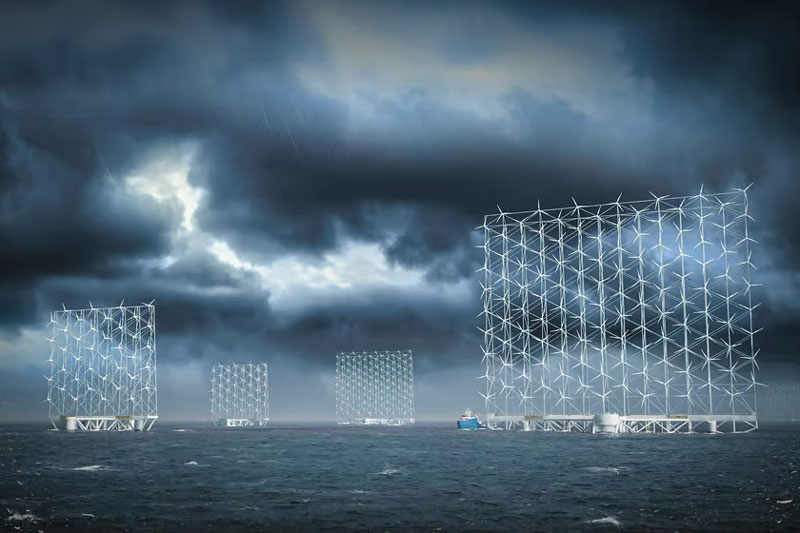Norwegian company Wind Catching Systems has announced that it has received expert approval for a prototype of a giant floating wall of wind turbines. Four 40-megawatt units will be built along the coast of Norway. Each will be a vertical field of many turbines with smaller rotor diameters. This approach will ensure ease of manufacture, deployment and maintenance while increasing output exponentially.

Image source: Wind Catching Systems
The floating wind farm WCS has received support from major global investment funds. If successful, it could transform wind energy. Instead of single high-power wind turbines, and China has already come close to producing single 22-MW wind turbines with blades up to 150 m, the Norwegians are offering a modular assembly of many smaller turbines with blades up to 15 m long. The modular farm will reduce logistics costs and maintenance costs many times over. Repairmen will not have to be rock climbers. They will be delivered to the repair site on the wind turbine by a regular construction gondola.

The company’s approval came from international registrar Det Norske Veritas (DNV), which is known for developing standards, rules and guidelines on which national agencies and regulators base their own and international standards in shipping, oil and gas, renewable energy and other industries. It kicks off the development of a 40-MW “wind wall” project, the first of which will be installed off the coast of Øygarden in southwestern Norway.
WCS’ floating wind wall project was unveiled in 2021. The company’s approach was impressive and controversial – it proposed a farm as tall as the Eiffel Tower (324 m) with a capacity of 126 MW. Nevertheless, the project attracted investors. During the first round of investment, the company received about $10 million from GM Ventures and entered into a strategic agreement with General Motors to develop the technology.
This was followed by grants of NOK 22 million and NOK 9.3 million ($2.1 million and $0.9 million) in September 2022 and February 2023. These grants were provided by Enova SF, a Norwegian state-owned enterprise that works to reduce greenhouse gas emissions and explore new clean energy technologies. The funds were used to carry out several developments, including building and testing a prototype floating foundation for a giant farm. It will be amazing to see this project realized at sea.
Source:

